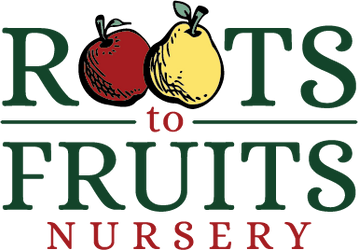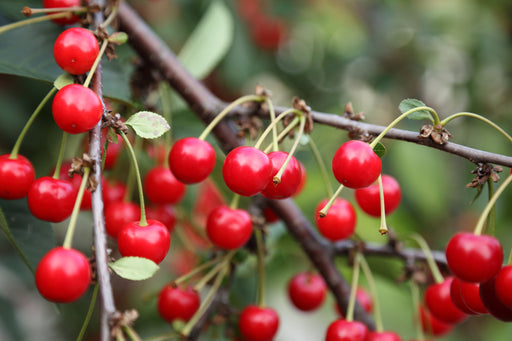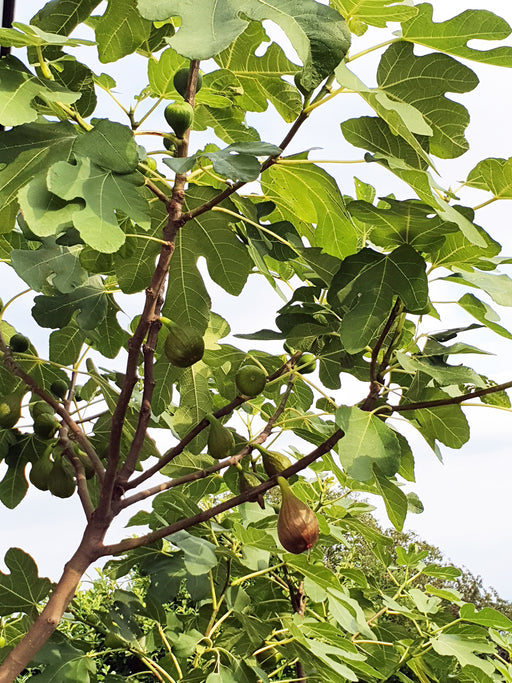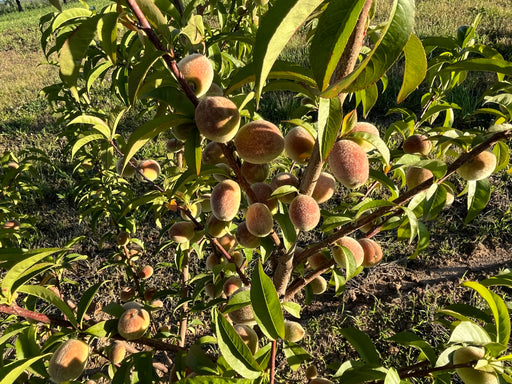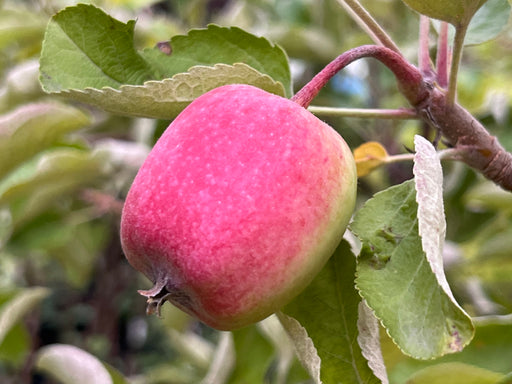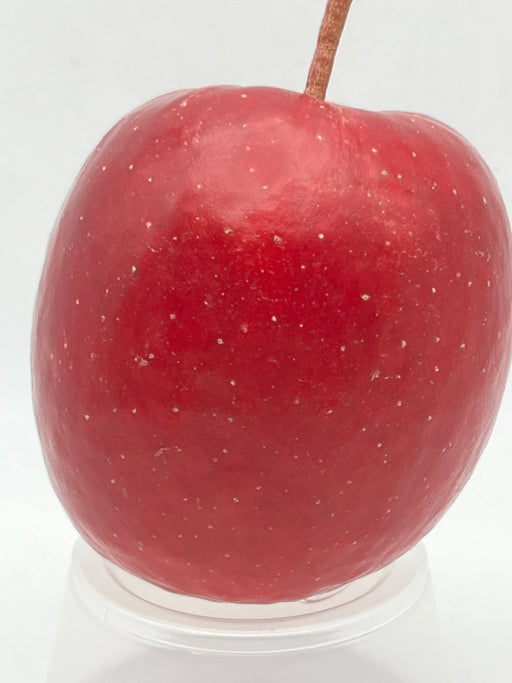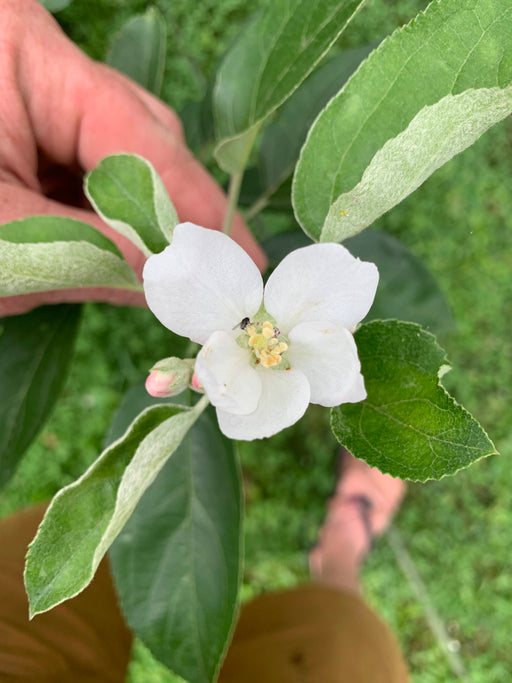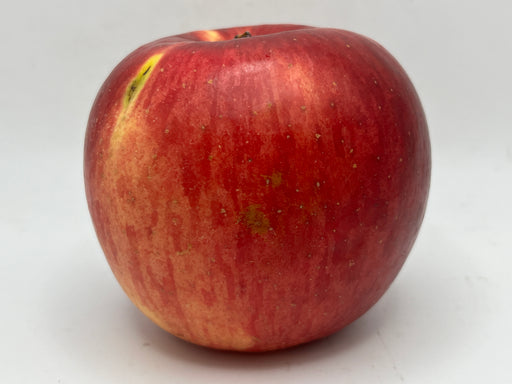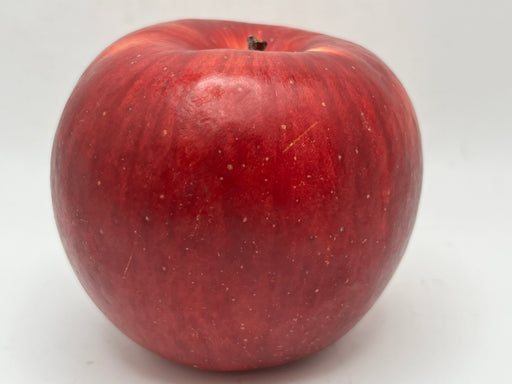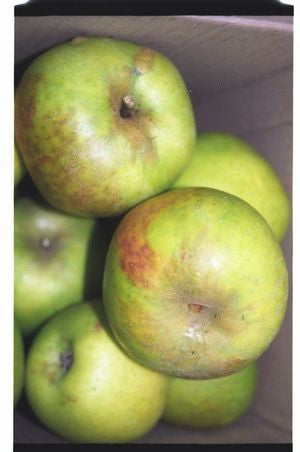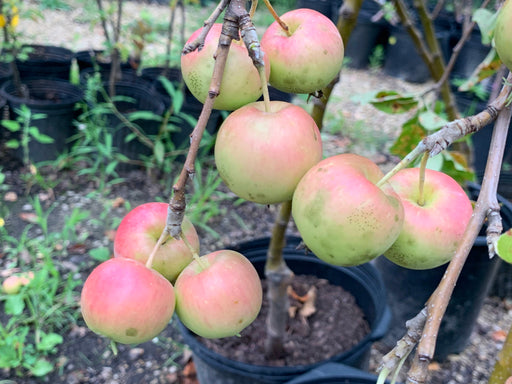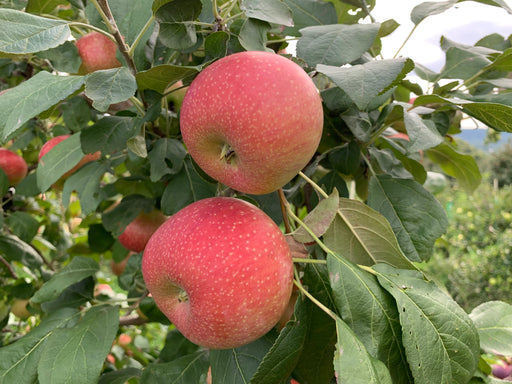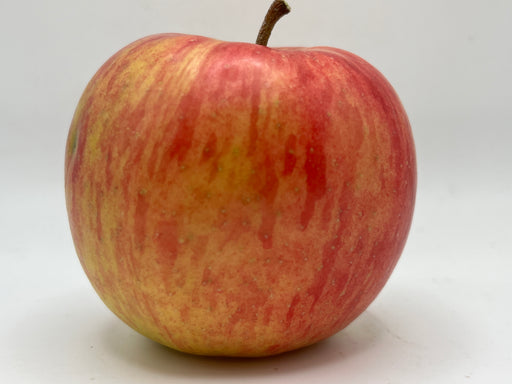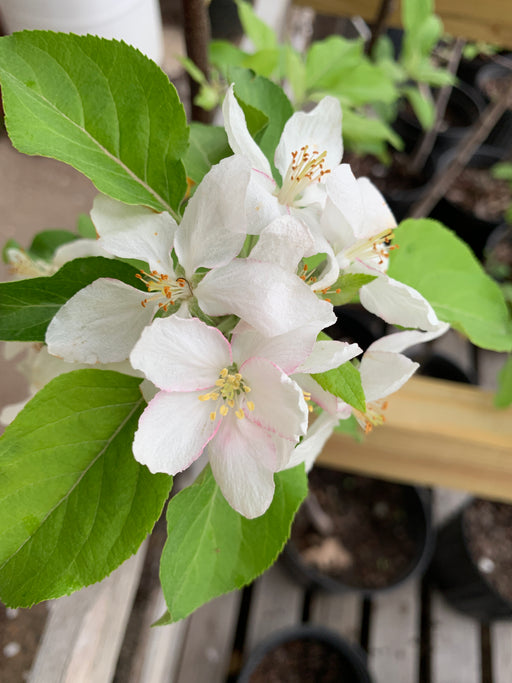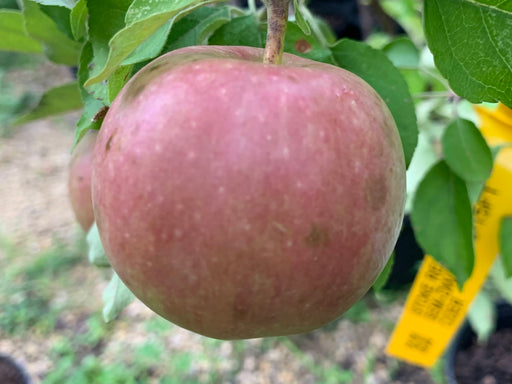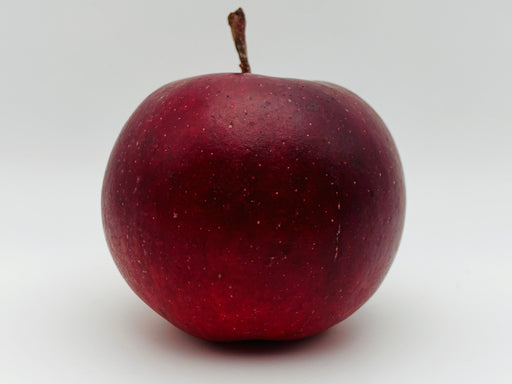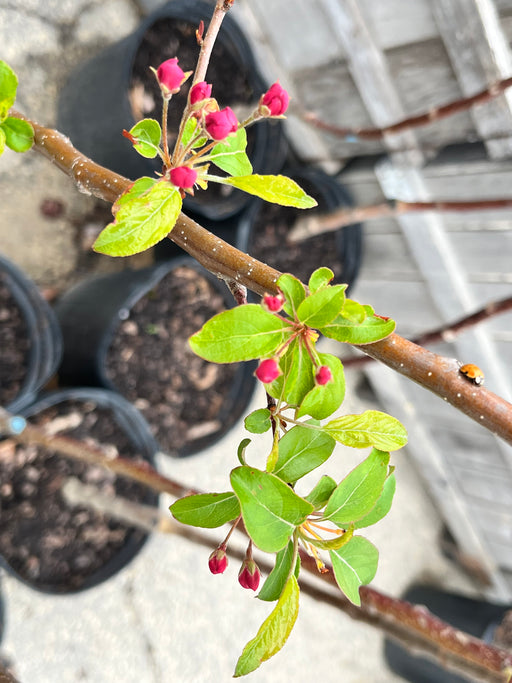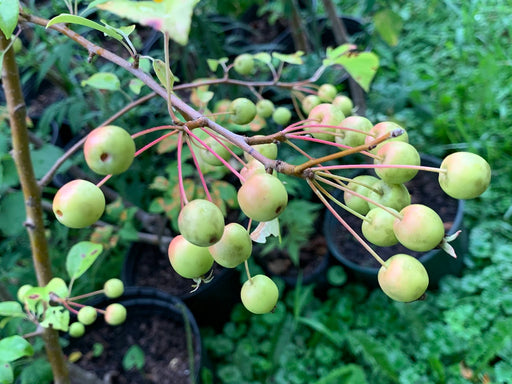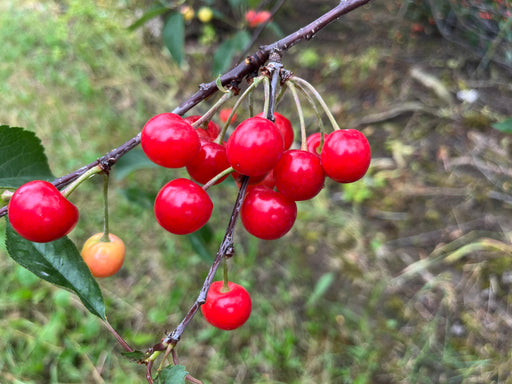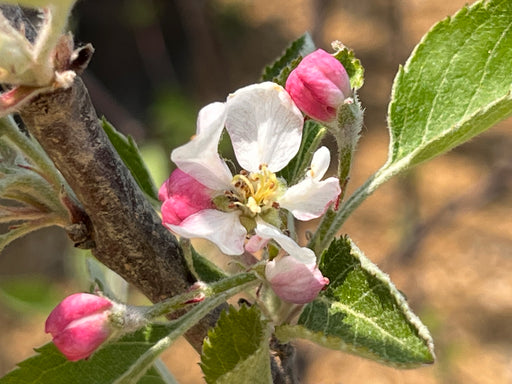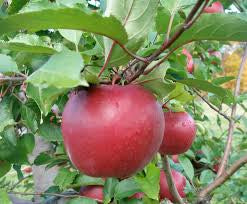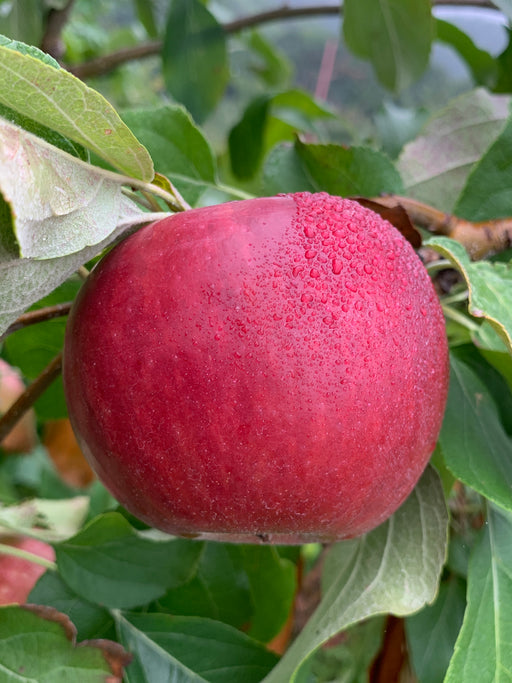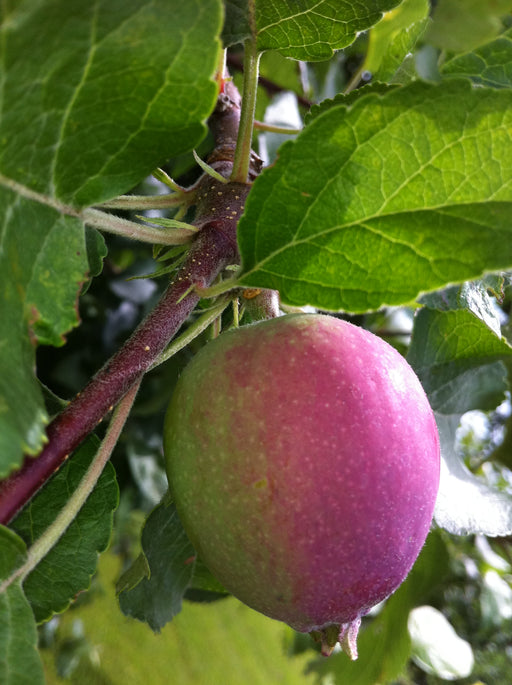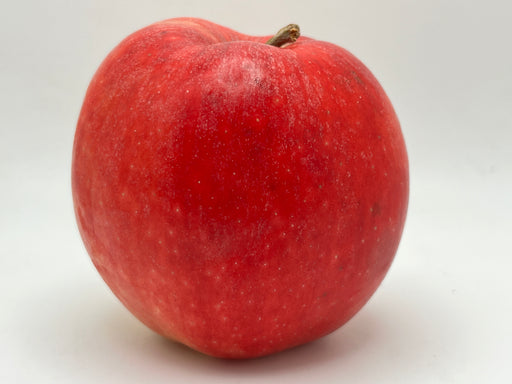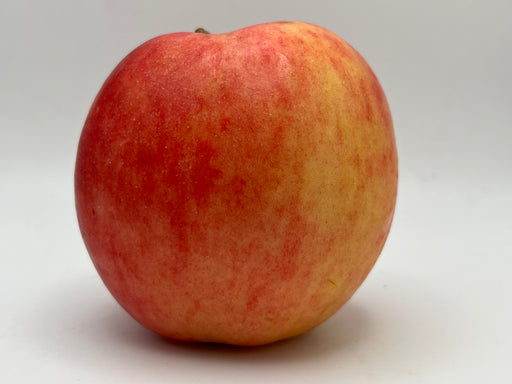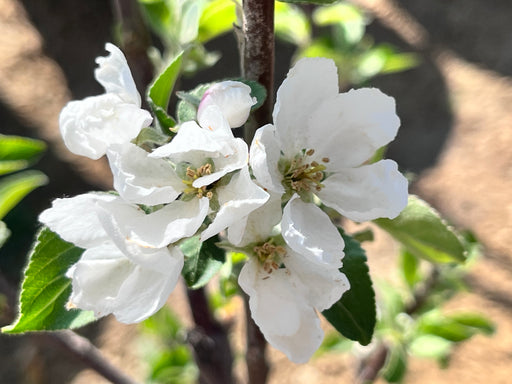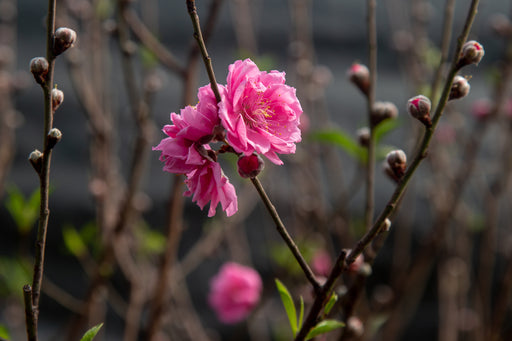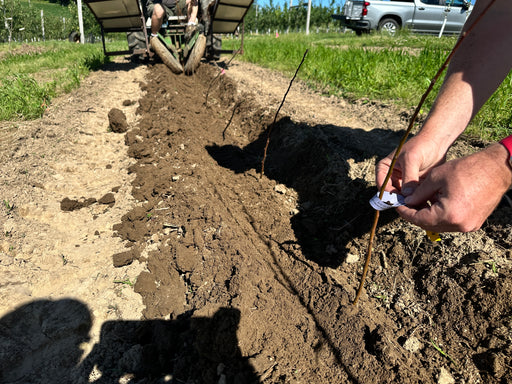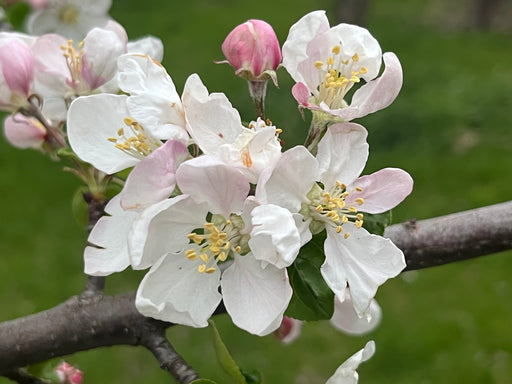Fruit Trees
Our apple trees, like many fruit trees, are propagated by grafting. There are two parts to an apple tree. The scion is the fruiting part of the tree, which gives you the variety of the apple, and the rootstock, which influences the mature size and hardiness of the tree, and determines the time it takes for the tree to fruit. We sell Standard, Semi-Dwarf, Dwarf, and Mini-Dwarf trees that do not require a lot of space and yet, will bear large fruit.
A few key notes on successful planting methods:
- Trees must be planted in well-drained soil
- Six hours of sunlight; full sun preferred
- Stake all trees for the first two years
- Dwarfs must have permanent stakes
- Tree guards should be used
- Plant at least two different apple tree varieties for Cross-Pollination
- Plant disease-resistant trees for less maintenance; we are happy to help make any suggestions you might need
We categorize our apple trees into at least five sizes: Petite, Maiden, Field Ready, Hand Select, and Container depending on the size of the tree. The Petite tree is our smallest graded tree less than 2 years in age; Maiden trees are usually 2 years old and are branchless. These are also called whips and will bear in 2-3 years. A Field Ready tree is 2-3 years old and might have some lateral branching, be thicker above the graft, and will bear in 1-2 years. The Hand Select trees are only about 20% of trees we have and are 3 year old trees, 6-9’ tall and can be heavily branched. You can expect fruiting on a Hand Select tree in about a year.
Joel Bush Cherry Plants
A tart bush cherry growing to less than 4' tall. Plant produces cherries along the length of the branch that ripen in September. Plant can tolerate...
View full detailsSelf-Fertile Fig Tree Bundle - 4 Trees
Figs have been popular foods since ancient times and are common across the old world. Figs can now be grown across all continents and make for exce...
View full detailsRanger Peach Tree
Description Coming Soon. Ships Spring 2026 USDA Zone: 4-8 Mature Height: Dwarf Seedling ~10-15' tall Sun: Full Sun Ripening Time: Mid-August Pollin...
View full detailsStory® Inored Apple Tree
Made available to the public in the 2000s, the Story® Apple (or Story® Inored) is a disease resistant variety from the Novadi Corporation in France...
View full detailsRed Gravenstein Apple Tree
The Red Gravenstein is a sport of the much older Gravenstein Apple. Originally planted in the 1670s, the Gravenstein apple was used as a cooking an...
View full detailsTsugaru Apple Tree
Released to the public in 1975 from the Aomori Apple Experimental Research Station in northern Japan; it is a cross between the Golden Delicious an...
View full detailsBramley's Seedling Apple Tree
One of the longest lived apple trees with the original specimen still standing in an orchard in Nottinghamshire, UK, having been planted as a seedl...
View full detailsConnel Red Apple Tree
Tom Connell discovered this apple on his orchard in Menominee, WI! Finally available to the public in 1956 the apple is closely related to its pare...
View full detailsBlack Oxford Tree
This Apple hails from Oxford County, Maine and was discovered by Nathanial Haskell in 1790. This very tree, still standing in 1907, is well known t...
View full detailsCreston Apple Tree
Developed in the 1990s by the Pacific Agri-Food Centre in British Columbia and is another offspring of the prodigious Golden Delicious. This apple ...
View full detailsRoseland Red Honeycrisp Apple Tree
Introduced in Minnesota in 1991, the Roseland Red Honey Crisp (RRHC) is a local favorite. The tree is one of the most vigorous and hardy of apple t...
View full detailsStoke Red Apple Tree
Named for Rodney Stoke in Somerset, England- this is an old cider apple. It finally became popular in the 1920s though the tree was almost certainl...
View full detailsFrettingham Crabapple Trees
A Mid- Late season bloomer, these white blossomed, single petaled crabapples are small and numerous on the tree. Excellent pollinators for apple tr...
View full detailsCheropugy Bush Cherry
Developed from a specimen from the collection of a fruit collector named Vojtech Slavetinsky in the Czech Republic and is closely related to other ...
View full detailsRed Rome Apple Tree
In 1817, Joel Gillet discovered a seedling tree from a nursery delivery and one of his children planted it near the Ohio River in Rome Township. A ...
View full detailsMonarch Apple Trees
An old English (Essex) variety bred in 1888 by crossing a Peasgood's Nonsuch (probably the coolest apple name ever) with a Dumelow's Seedling and c...
View full detailsKandil Sinap Apple Tree
Discovered in the Sinop Peninsula- modern day Turkey- in the 1700s. The apple is strikingly long and oblong in shape; similar to an early Strawberr...
View full detailsJonadel Apple Trees
Apple is slightly elongated with a small bulge in the middle. Its skin has an orange hue to it that transitions to a bright red color when exposed ...
View full detailsEmpress Apple Tree
L. Frederic Hough of Rutgers University first crossed this tree in 1969 by pairing the Jonamac x Vista Bells apples. The tree, having a similar sha...
View full detailsChieftain Apple Tree
Cross of a Jonathan and Delicious and created back in 1917 but wasn't released to the public in the 1990s. Very sweet and cold hardy- it is also di...
View full detailsBonfire Peach Tree
This peach is grape for small spaces and can even be planted in a container and kept indoors. Naturally a compact dwarf tree topping out at 7' tall...
View full detailsM.26 Rootstock
A vigorous dwarfing rootstock introduced in 1929 from the East Malling Research Station. The standard dwarfing rootstock to which all other dwarf r...
View full detailsDesert King Fig Tree
Description Coming Soon! USDA Zone: 6 (with strong winter protection)-10. Outdoor hardiness to Zone 7. Mature Height: 25-35' in the ground and 6-8'...
View full detailsElstar Apple Tree
Dutch dessert apple first crossed in the 1950s. It can count the Golden Delicious in its parentage which gives the apple a well balanced flavor tha...
View full details